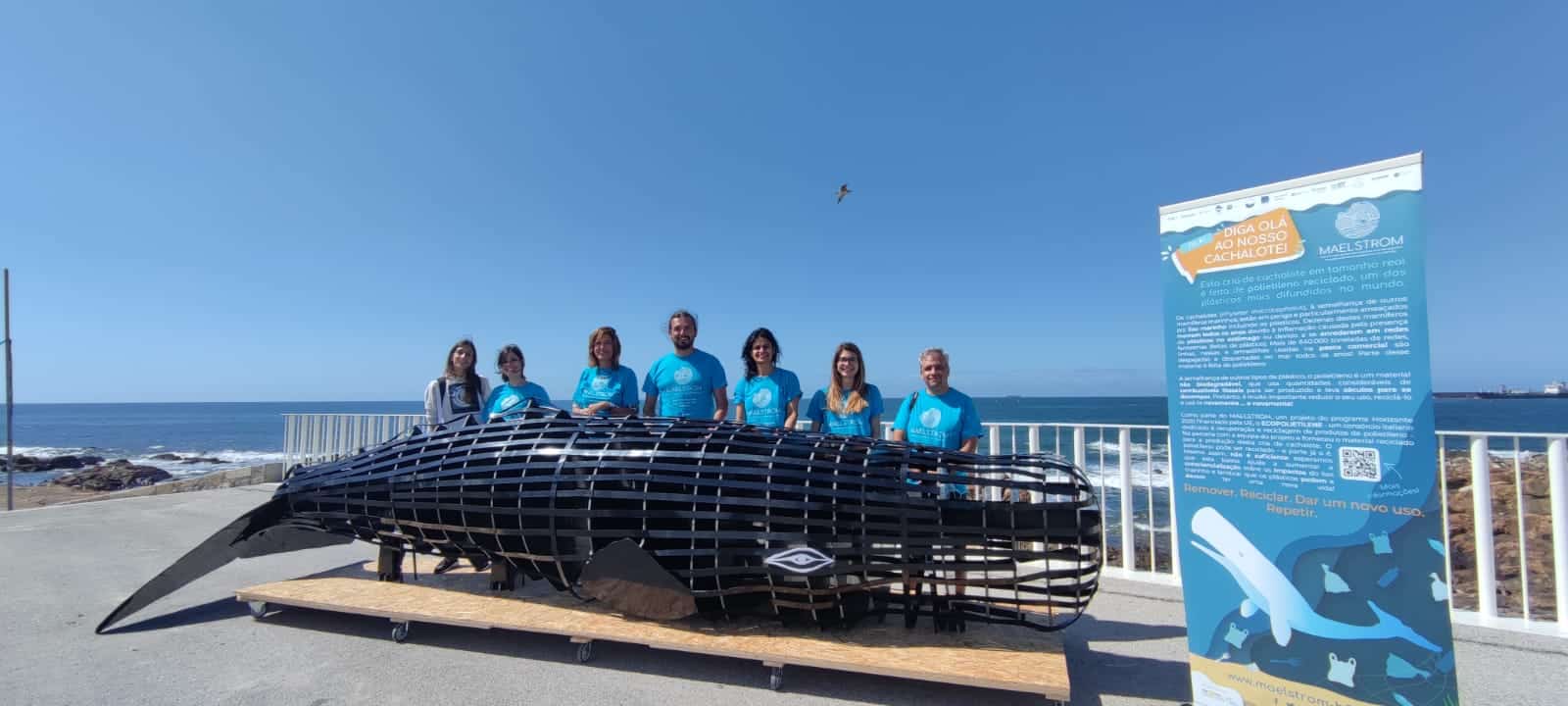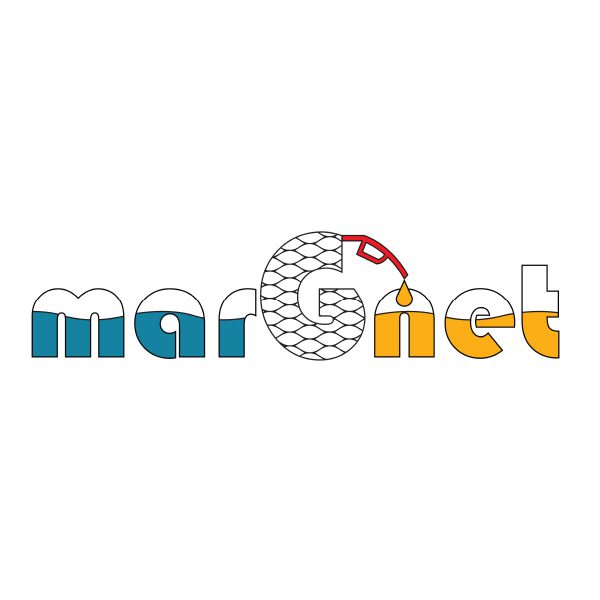OUTPUTS
TECHNOLOGIES
Robotic Seabed Cleaning Platform | Venice Lagoon, Italy
The robotic seabed cleaning platform developed by TECNALIA, CNRS- LIRMM and Servizi Tecnici allows to reach the seabed of lagoons and coastal areas to remove marine litter, including macro plastics. It also identifies marine litter and picks each item selectively so as to minimize the impact on ecosystems.

How it works
- A floating platform to support the cable robot structure and winches, as well as industrial equipment.
- A cable robot, consisting of eight cables wound onto eight winches to connect the floating platform to an underwater mobile end- effector. By controlling the length and tension of each cable, the position and orientation of the robot end-effector is accurately controlled.
- A set of sensors for underwater perception to control the robot and detect & identify the marine litter to be removed.
- A drudge to suck up smaller litter and a gripper to grasps larger items like tires, parts of boats, fishing nets etc.
Bubble Barrier | Ave River, Portugal
The Bubble Barrier, developed by The Great Bubble Barrier, is an innovative and efficient technology that catches plastic pollution in rivers before it reaches the ocean, using bubbles. It consists of 3 components: a bubble curtain, a compressor, and a catchment system. Within the MAELSTROM project, the Bubble Barrier will be co-powered through solar panels developed by the University of Malta.

How it works
- A bubble curtain is created by pumping air through a perforated tube on the bottom of the waterway.
- The bubble curtain creates an upward current which directs the plastics to the surface.
- By placing the Bubble Barrier diagonally in the river, the natural flow will push the plastic waste to the side and into the catchment system.
- Electricity generated from floating and on- land solar panels will provide a portion of the energy requirements of the Bubble Barrier.
A marine litter tracking app
The MAELSTROM app was designed for practitioners and aims to facilitate marine litter management cycle through three main sections: identification, collection (clean-up) and transfer to the final destination for recycling (tracking). The data collection process on the field has also been made easier: the information on marine litter can be recorded automatically rather than manually. The data collected by the MAELSTROM app is suitable for sharing with portals and repositories of marine litter data such as the European Marine Observation and Data Network (EMODnet), contributing to transparent and complete marine litter collection and recycling processes in Europe, in line with the Marine Strategy Framework Directive.

How it works
- The monitoring module supports marine litter surveys by providing operators with a multilanguage catalogue of stranded macro- litter items from the EU Marine Litter Item Category Masterlist.
- The clean-up module provides a platform to record quantity (e.g. number of bags and weight) and type of litter (e.g. recyclable, not recyclable, etc.) collected during clean-ups.
- The tracking module allows to record the transfer of the waste material, from the place where it was collected to its final destination where it is transformed into new products. For information: info@maelstrom-h2020.eu
SOCIAL AWARENESS
SAY HI TO OUR SPERM WHALES!

As part of our commitment to create social awareness on marine litter impacts, we engage in several hands-on events such as educational workshops, info-days, and beach clean ups. To reinforce such efforts, MAELSTROM’s team has designed a set of three plastic whales which are present at key events and used as engagement tolls during educational workshops for young generations in our pilot countries – Italy and Portugal.
Our plastic whales are in fact real size sperm whale calves, made of recycled polyethylene, one of the most widespread plastics in the world.
Sperm whales (Physeter macrocephalus), like other marine mammals, are endangered and particularly threatened by plastic marine litter. Dozens of these whales die every year due to inflammation caused by the presence of indigestible plastic in their stomach or due to entanglement in ghost (plastic made) nets. More than 640,000 tones of nets, lines, pots and traps used in commercial fishing are dumped and discarded in the sea every year! Most of that material is made of polyethylene.
Similar to other types of plastic, polyethylene is a non-biodegradable material, which uses considerable amounts of fossil fuels to be produced and takes centuries to decompose. It is therefore imperative to reduce its use, to recycle it and to use it again…and again!
To build our whales we have partnered with ECOPOLIETILENE – an Italian based consortium dedicated to the recovery and recycling of polyethylene goods – which has provided us the recycled material from which our sperm whales were made of. Polyethylene can be recycled – some of it already is but it is still not enough: we hope our whales will help to create awareness regarding marine litter impacts, while also highlighting that plastics can and must have a new life!
Our motto is: Remove. Recycle. Give it new use. Repeat. Will it be yours too?
We are looking for long-term stable homes for our whales after our project will conclude. If you are in Portugal or Italy and would like to host one of our whales in your school, museum or institution, kindly contact us at: info@maelstrom-h2020.eu
Specifications:
- Length: 6,30 m
- Width: 1,20 m
- Weight: 100 kg
- Materials: Recycled polyethylene, wood, aluminum and glass
- Design: Massimiliano Rosso and Isabel Gomes | CIMA Research Foundation
PUBLICATIONS
Peer Reviewed
PhD Thesis
| Title | Focal point / Comments |
|---|---|
| Susanna Mesghez – PhD Thesis at the University of Ca’ Foscari (2023- ongoing)- Macro- and micro- litter monitoring in the Northern Adriatic coastal area | CNR |
MA Thesis
| Title | Focal point / Comments |
|---|---|
| Olatz Ortega MSc Erasmus Mundus 2022 (concluded). Marine litter characterization and awareness actions in the NW coast of Portugal. Erasmus Mundus Joint MAS in environmental Contamination and Toxicology, University of Porto. | CIIMAR |
| Léa Josse MSc internship 2021: Hydrodynamical conditions of shallow water estuaries and their influence in marine litter transport patterns. MA in Fluid mechanics, energy, and environment, ENSEEIHT, Toulouse, France. | CNRS |
| Amine Mohammed MSc internship 2022 (ongoing): Implementation of an estuarine numerical model to represent hydrodynamic patterns and marine litter transport. MA in marine engineering, SeaTech, Engineering School of the University of Toulon, France. | CNRS |
| Maite Lupiac internship equivalent to MSc thesis 2022 (ongoing): Characterization and analysis of Portuguese marine litter and its link with estuarine hydrodynamics. MA in Fluid mechanics, energy, and environment, ENSEEIHT, Toulouse, France. | CNRS |
| Daniela Padilha MSc thesis 2021/2022 (concluded): Avaliação do Lixo Marinho e Microplásticos nas Águas de Transição do rio Ave. MA Ecology and Environment, Faculty of Sciences, University of Porto. | CIIMAR |
| Rui Moreira MSc thesis 2021/2022 (ongoing): Avaliação do estado do ecossistema e da qualidade das águas de transição do rio Ave. MA Ecology and Environment, Faculty of Sciences, University of Porto. | CIIMAR |
| “F. Picamal “”Underwater Robotics and Deep-Learning. based Image Processing””. MSc Thesis 2023, Mines Paris – PSL.” | LIRMM/CNRS |
| Claudia Pezzilli – Monitoring litter pollution and zooplankton community in the Ave River estuary, Portugal. MSc Thesis 2022/2023 in Marine BIology at the University of Bologna, Italy (concluded in March 2023) | CNR/CIIMAR |
| Giorgio Simone – Environmental data collection for ecological status assessment and monitoring of microplastics pollution in sediments in the Ave River estuary, Portugal- MSc Thesis 2022/2023 in Marine BIology at the University of Bologna, Italy (concluded in March 2023) | CNR/CIIMAR |
| Susanna Mesghez – Monitoring of macro- and microlitter in the Venice lagoon and coastal area- MSc Thesis 2022/2023 in Marine BIology at the University of Bologna, Italy (Concluded in March 2023) | CNR |
LEGACY DOCUMENT & POLICY BRIEFS


































